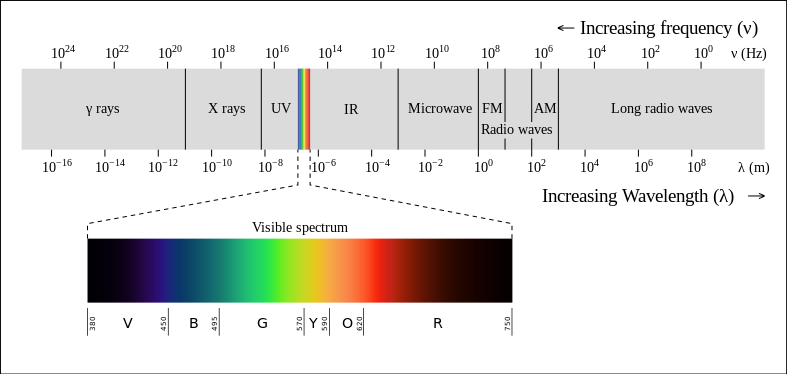http://www.astronomicalimaging.com/ wrote:
MSU student shares knowledge, love of astronomy with elementary students, community
April 19, 2010 -- Anne Pettinger Cantrell, MSU News Service
Montana State University student Ryan Hannahoe loves astronomy and getting others excited about science, and it's instantly apparent. Several seconds into an interview, he blurts out: "Have you ever looked at the sun?" Grinning, he pulls out eclipse glasses. They're made with lenses that block out ultraviolet light and most visible light, allowing people to view the sun without injuring their eyes. "When you look through these, you can see magnetic spots on the sun, if they're big enough," he said.
Several weeks later, Hannahoe is working with a different audience: a group of local elementary school students. Hannahoe walks around the classroom, asking the students questions. "Who can tell me what goes around the Earth and is not man-made?" A majority of the kids eagerly raise their hands. "The moon!" one girl answers when Hannahoe calls on her. Many more questions and answers follow. Then, to a chorus of excited murmurs, Hannahoe tells the students it's time for something they've been talking about for weeks. With Hannahoe's help, the 24 third and fourth grade students at Bozeman's Irving Elementary School will each assemble a telescope. The $30 telescopes, donated by MSU's Optical Technology Center, will then be theirs to keep.
The kids follow Hannahoe's directions step by step: pull the materials out of the cardboard box, wait for one of the adults to place the lens in the proper space, fit the scope around the lens, place O-rings around the scope to help hold the parts in place, and finally, affix a sticker, which has an image reminding telescope users not to look at the sun. The kids will get to try out their telescopes at a stargazing party in a few days, but for now, they excitedly squint into them in the daylight, gazing at objects around the classroom. One fourth grade student said he was excited to have the telescope and planned to use it outside and hang it in his room.
"My whole goal is to get people interested in science, especially little kids," Hannahoe said of his motivation for the work. "I want to make science accessible to the public." Hannahoe certainly has the knowledge and enthusiasm to accomplish this goal. An astronomy buff since he was a young kid himself, Hannahoe made his first telescope when he was 13. He remembers his mother frequently driving him hours away from their suburban Philadelphia neighborhood when he was a kid so that he could gaze up at a night sky unblemished from light. Soon after graduating from high school, he took a job at an observatory in New Mexico. Now 25, he has traveled around the U.S. as an astronomy lecturer, is a pioneer in observing the skies remotely using computer equipment and electronic cameras, and boasts an impressive portfolio of astronomy-related photographs that he has taken over the years. He currently works remotely for an observatory in Australia, using an Internet connection to steer telescopes, take photographs and solve computer problems.
"Science should be open to everyone," Hannahoe said. "It's fun and important." The mantra has influenced much of the work Hannahoe has recently undertaken. One way he has increased accessibility and understanding in science is through his project with Irving Elementary School. Hannahoe, an MSU education major (he also has a degree in information technology), has gone beyond the college's normal degree requirements by designing an astronomy unit for Irving students. Hannahoe worked with several MSU professors, including Lori Brockway and Joseph Shaw, to create the five-part unit, which includes pre-and-post assessments, lessons, the telescope assembly session and an evening stargazing event. He is receiving no academic credit for the work and estimates that he has volunteered dozens of hours of his time to the project.
Another large project to which Hannahoe has devoted himself is Astronomy Day, a free afternoon of astronomy-related events held annually at the Museum of the Rockies. Last year, when Hannahoe first served as an organizer, a record 2,000 people attended, making it one of the largest science events held in the state. This year, Hannahoe is again serving as an organizer, and he hopes it will be even bigger.
"So many people are afraid of or intimidated by science," Hannahoe said. "Astronomy Day is a great way to reach out and get people excited about it." In fact, one of Hannahoe's strengths is his ability to work well with people, said Mike Rice, owner of the New Mexico Skies observatory near Cloudcroft, N.M., where Hannahoe worked before moving to Bozeman in 2008. Hannahoe said he decided to attend MSU after visiting campus to lecture at the Museum of the Rockies. "Ryan is very much a people person," Rice said. "He reaches out to people and explains things in terms they can understand."
At New Mexico Skies, Rice said, Hannahoe often interacted with guests, teaching them about astronomy and how to use telescopes. Hannahoe worked at the observatory for a number of years, starting when he was in high school and worked there remotely. Hannahoe later moved to New Mexico and worked on-site for about three years. Hannahoe currently works as the director of client support services at the Fair Dinkum Skies observatory in Australia, which is connected to New Mexico Skies. In that role, he helps people solve computer and software problems, often waking up around 2:30 a.m. to work.
Hannahoe is an accomplished and well-respected astronomer, Rice said, which he called particularly impressive given Hannahoe's young age. "Ryan really helped pioneer remote astronomical observing back when he was in high school, and now virtually all observing is done remotely using electronic cameras," Rice said. "When he graduates from MSU, we'll be fighting to get him back (to New Mexico Skies).">>
 The Trifid Nebula is Stars and Dust
The Trifid Nebula is Stars and Dust

